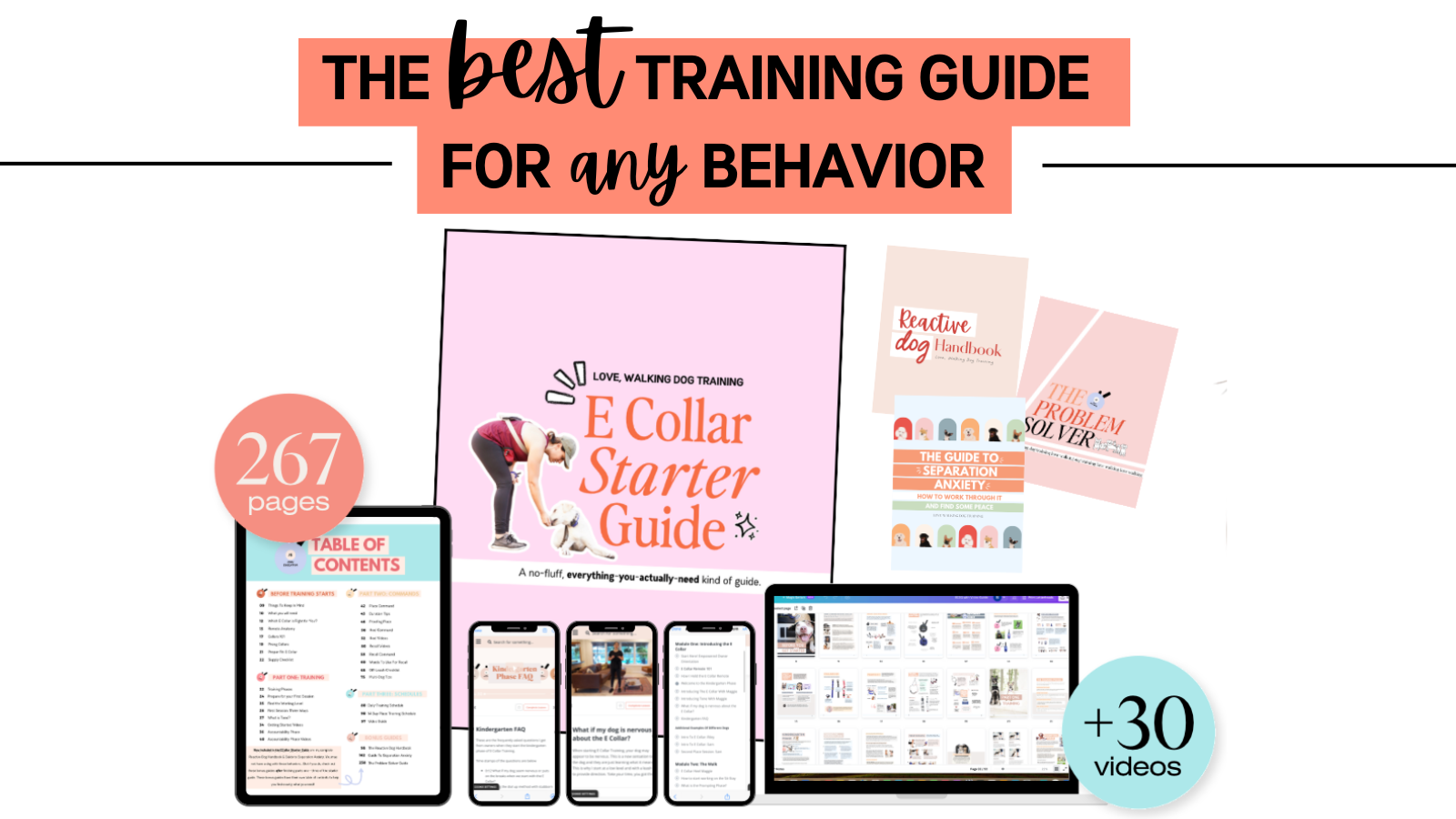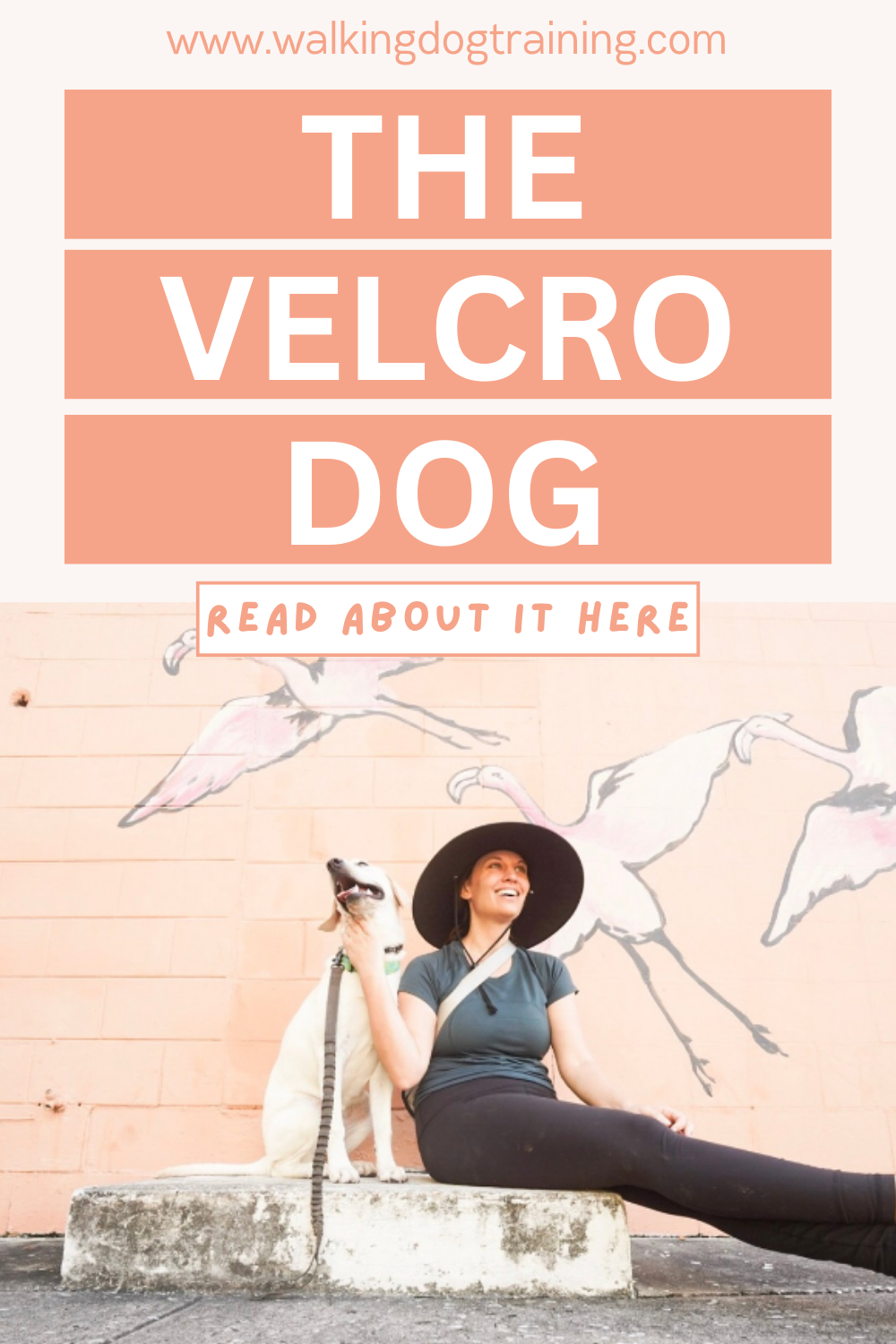The Velcro Dog: Cute or no?
Everyone knows that dog… the one who follows their owner step by step around the house anticipating their every move and breath. This is what I lovingly call a velcro dog. What is a velcro dog? A velcro dog likes to follow their owner everywhere. When you pee, get up from the couch, go into the kitchen, and when you peek through the window because you heard a sound. Velcro dogs are thinking “what if it’s a serial killer-and what if I wasn’t there that one time and they made their move. What if I wasn’t right there to save you?”
They stick to you, just like velcro.
But Is it actually a problem?
Some owners love a velcro dog. It gives them a sense of comfort and security having their dog beside them at every move and doesn’t cause a problem for them or their dog. Other owners find themselves looking for a solution when their dog develops these behaviors. SO, is it actually a problem? To answer this question, let’s be clear about the two types of velcro dogs.
Type one: This velcro dog is a stage five clinger and also has separation anxiety when left alone. They may whine, howl, bark, pace, or tear things up when away from their owner. Even providing structure, such as a crate, does not provide comfort during separation from their owners for a type one velcro dog. Because of this, owners of type one velcro dogs often bring their dogs with them when they go places just to avoid dealing with the velcro dog’s inevitable anxiety attack. The mental state of both the owner and their dog are often compromised due to their clingy behaviors.
Type two: These velcro dogs love to follow their owners around but they don’t mind being left alone. While their owner is home they are all yours - unconditional devotion. They may be the best couch snuggle buddy or the perfect sous chef at your feet while you are cooking. But when you leave, this velcro dog happily relaxes and waits for the love of their life (yep, that’s you) to return. Being clingy doesn’t affect their mental health (or yours for that matter).
If you find yourself saying things like, “my dogs follow me everywhere-they love me so much”. Or, “look how cute my little clingy tomato is. Momma loves that you want to be with me!”
Ask yourself, is my dog type one or type two? If you have a type one velcro dog, it might not be as cute as you think. What may seem like an adorable personality trait may actually indicate that there are some underlying problem behaviors, but not always.
A type two velcro dog doesn’t seem to be affected by the clingy stuff. They are using their clingy behaviors to show love and affection to their owners, so for this kind of velcro dog it’s not really a problem.
If your dog falls into type one category, letting them follow you around everywhere is not helping things. The more you allow your dog to velcro to you, the more you are feeding into their anxious behaviors… which in turn will make them more frequent. AND it's not good for your dog's mental health (or yours).
Okay, so I have a velcro dog. What do I do about it?
This is where balanced training and the e-collar can really come in handy. Here's what you can do instead of letting your dog be a velcro dog…
Replace velcro time with place time. Let’s think about WHY your dog is a velcro dog. Most of the time it is stemming from boredom, anxiety, or this behavior has just become routine (they’ve been a velcro dog for awhile after all-why change now?) In all three of these instances, we can offer a replacement behavior to break the cycle of velcro-ing. Creating some distance between you and your dog (although challenging at first) will be so good for their confidence and offer an alternative behavior to their clingy tendencies. Start by choosing a time that is convenient for you when it would be helpful for them to not be clingy (cooking dinner, after a walk, while you are at your computer working) and give them a job… place. Make it consistent daily and hold them accountable for this new routine. Even a little each day adds up.
Here's what I DO NOT recommend. Beating yourself up for not knowing things sooner. I basically knew nothing about clingy dogs until I got a dog that needed me to know more - to help him be at his best- so then I learned. Some of us get dogs that push us to step up a little extra - that’s all. And you're here. Learning. You’re doing it. Be proud of yourself for getting curious and following trainers like myself who want to empower you.
Start small, add some structure, and work from there. Remember, no behaviors are permanent. Some behaviors take more effort… more time… more problem solving.
Need some extra guidance and not sure where to go next with your stage five clinger? Check out my E Collar Starter Guide. This guide now includes my guide to separation anxiety, perfect for owners who need help with their clingers. I created this guide for owners who are struggling with separation anxiety and not sure where to start or how to deal with it. I've shared so much about E Collar training and how helpful it is for separation anxiety and I lay it all out in this guide. Still need more help? Book a 30 minute virtual session to chat with me about your challenges and bounce ideas back and forth.





